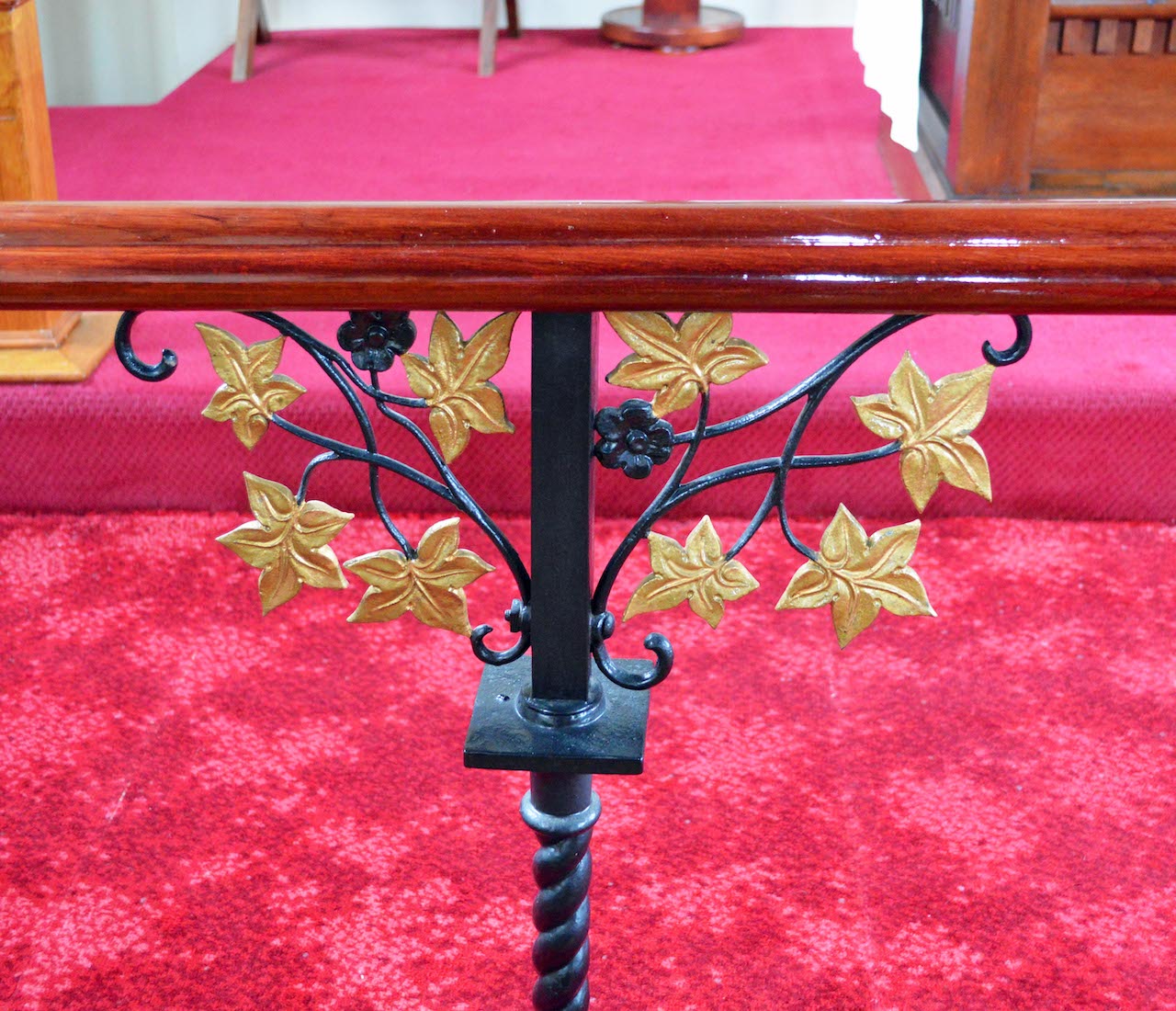22. WALL PLAQUES

There is a brass plaque on each side wall. These read: ‘In Memoriam Thomas William Higgins who died August 9th 1915 aged 75 years', and ‘To the glory of God and in loving memory of our dear mother Heloise May Higgins of “Burnt Oak” Currency Creek who passed away Dec 9th 1934.’ The Higgins family were obviously valued members of this congregation.
23. SOUTH SIDE OF SANCTUARY
On this side of the sanctuary stands an interesting lectern. Attached to the wall behind is a small retable, and just out of sight in the wall to the left a brass aumbry.
24. RETABLE
A retable is a small shelf placed near the altar. It is commonly used for the placing of the Eucharistic Elements in the early part of a service.
25. AUMBRY
In congregations where the Eucharistic Elements are blessed by the priest and kept for future use, they are locked away in a small container called an aumbry. A small light indicated the presence of the Elements. The door of this aumbry is attractively decorated with a silver cross and the Greek letters Alpha and Omega representing Christ.
26. LECTERN STAND
It is not quite clear what this stand is used for: it could be used as a little table, or as the supporting base for a sloping brass missal stand. The carved woodwork is interesting.
27. ALTAR RAIL
I found the black and gold wrought iron supports for the altar rail particularly attractive. The vine leaves are an allusion to the Eucharistic Wine and the shed blood of Christ.
28. PULPIT
Like everything else in this Church the pulpit, with its heavy base, is simple in design and functional. Yet on closer inspection we see some attractive inlay woodwork, with the front panel showing two crosses and a Star of David.
30. ALTAR AND CRUCIFIX
Although the altar is the centre of activity for a worship service, it is Christ who is the central focus of a Christian service. Opinions may differ as to whether that focus should be the crucified Christ, or the Risen Christ as symbolized by the bare Cross: the first option is chosen here.
31. CRUCIFIX
We can reflect on the Crucifix with the words of the Nicene Creed: ‘We believe in one Lord, Jesus Christ, the only Son of God, ... For our sake he was crucified under Pontius Pilate; he suffered death and was buried. On the third day he rose again in accordance with the Scriptures; he ascended into heaven and is seated at the right hand of the Father. He will come again in glory to judge the living and the dead, and his kingdom will have no end.’ This completes our tour of the Holy Evangelists Church.

CONCLUSION
I hope you have enjoyed visiting the Holy Evangelists’ Anglican Church with me. Many country churches are kept closed, but this one has long open hours for the public to visit.
I am happy to receive constructive comments or corrections concerning this website. The best websites are the ones which have no errors! I am grateful to my wife Margie who came to Goolwa with me, and who has proof-read these pages.
I had difficulty finding much information about this Church, apart from the ever reliable Wikipedia. I do hope more details will be forthcoming about items within the building.
The photographs which appear on this site are all mine, and can also be found in higher resolution at:
https://www.flickr.com/photos/paulscottinfo/albums/
Site created 02 / 2017 ; reformatted 01 / 2021
Paul Scott









